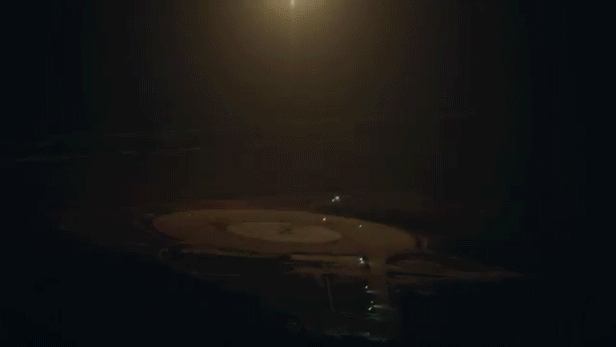A Giant Leap (Backward) for Space Travel
SpaceX has taken a major step toward slashing the cost of satellite launches, safely returning one of its launchers to the ground in reverse.
The Falcon 9 rocket was launched at 8:29 p.m. from Cape Canaveral Air Force Base in Florida yesterday, deploying 11 communications satellites into orbit before returning to Earth. SpaceX CEO Elon Musk provided live updates of the event via Twitter, and SpaceX posted a video showing the mission in its entirety to YouTube.

The successful launch also marked SpaceX’s return after its last rocket exploded during takeoff on June 28. The company has tried twice before to land a rocket, without success (see “SpaceX Claims Partial Success with Rocket Crash Landing”). “It’s a revolutionary moment,” Musk told media after the landing. “No one has ever brought a booster—an orbital-class booster—back intact.”
Musk’s private space company has been working on the audacious maneuver for some time, and earlier this year we profiled Lars Blackmore, a key member of the team at SpaceX working on the effort (see “35 Innovators Under 35: Lars Blackmore”).
Flying a rocket back to Earth in reverse after blastoff is an incredible feat, and Blackmore’s expertise lies in developing the algorithms needed to model and react to the chaotic conditions experienced during descent. When I spoke with Blackmore, who previously designed the descent system for a NASA Mars probe, I was struck by how confident he was that SpaceX would succeed. He also did a nice job of explaining why reusability is so important. “The propellant is less than half a percent of the cost of a rocket launch,” he told me. “So you’re basically flying a 747 across country and then just throwing it away rather than refueling it and flying it back.”
This is far from the finish line for SpaceX, though. The company must demonstrate that it can perform the return flights fairly reliably, and more important, it must show that a rocket that’s already been through one blastoff can be refurbished well enough to go again.
Keep Reading
Most Popular
Large language models can do jaw-dropping things. But nobody knows exactly why.
And that's a problem. Figuring it out is one of the biggest scientific puzzles of our time and a crucial step towards controlling more powerful future models.
How scientists traced a mysterious covid case back to six toilets
When wastewater surveillance turns into a hunt for a single infected individual, the ethics get tricky.
The problem with plug-in hybrids? Their drivers.
Plug-in hybrids are often sold as a transition to EVs, but new data from Europe shows we’re still underestimating the emissions they produce.
Stay connected
Get the latest updates from
MIT Technology Review
Discover special offers, top stories, upcoming events, and more.